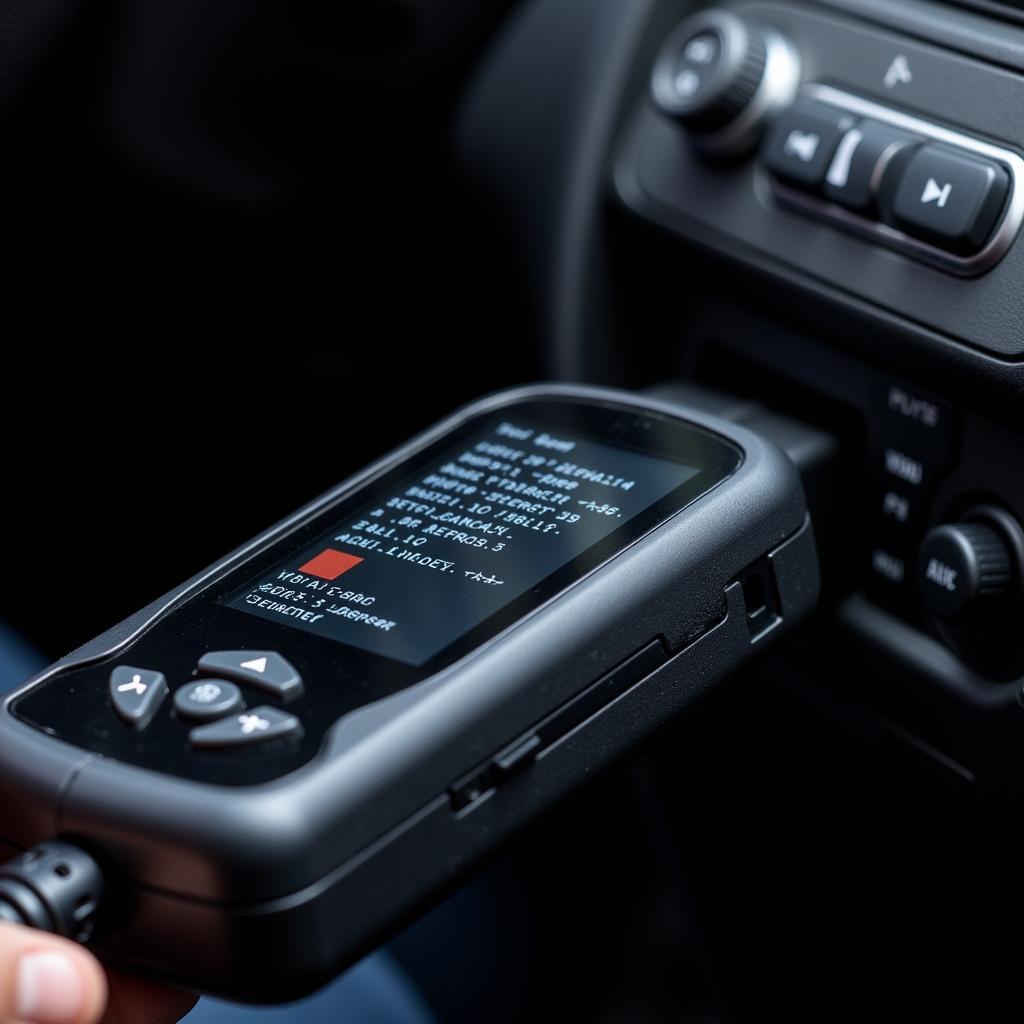Modern vehicles are marvels of engineering, but even the most reliable car can encounter issues. When this happens, a quick and accurate diagnosis is essential. This is where Car Problem Diagnostics come into play.
Understanding Car Problem Diagnostics
Car problem diagnostics involve identifying and troubleshooting malfunctions within a vehicle’s various systems. Gone are the days of relying solely on a mechanic’s intuition. Today, sophisticated technology empowers car owners and professionals alike to pinpoint problems efficiently.
The Role of Diagnostic Tools
At the heart of car problem diagnostics lie powerful tools designed to read and interpret data from your vehicle’s computer system. These tools range from basic code readers to advanced scanners capable of accessing in-depth information about your car’s health.
OBD2 Scanners: Your Car’s Translator
The most common diagnostic tool is the OBD2 scanner, which connects to your car’s OBD-II port, usually located under the dashboard. This handy device reads diagnostic trouble codes (DTCs) stored in your car’s computer, providing valuable clues about potential issues.
 OBD2 Scanner Connected to a Car
OBD2 Scanner Connected to a Car
Beyond Basic Codes: Advanced Diagnostics
For more complex problems, advanced diagnostic tools come into play. These sophisticated devices offer a wider range of capabilities, including:
- Live data streaming: Monitoring real-time sensor data like engine speed, coolant temperature, and oxygen sensor readings.
- Actuation tests: Activating specific components like fuel injectors or solenoids to verify their functionality.
- ECU programming: Updating or modifying your car’s engine control unit (ECU) software.
Common Car Problems Diagnosed with Diagnostic Tools
Car diagnostic tools are instrumental in identifying a wide range of problems, including:
- Engine issues: Misfires, poor fuel economy, loss of power.
- Transmission problems: Slipping gears, rough shifting, and transmission fluid leaks.
- Brake system faults: ABS issues, brake warning lights, and uneven brake pad wear.
- Electrical problems: Battery issues, faulty sensors, and wiring harnesses.
- Emissions-related problems: Oxygen sensor malfunctions, catalytic converter issues, and evaporative emissions control system problems.
alternator problem using car diagnostic tool
The Benefits of Car Problem Diagnostics
Using car problem diagnostics offers several benefits:
- Faster repairs: By quickly pinpointing the root cause of the issue, diagnostic tools significantly reduce the time spent on troubleshooting.
- Cost savings: Accurate diagnosis prevents unnecessary repairs, saving you money on parts and labor costs.
- Increased safety: Identifying potential safety hazards early on ensures a safer driving experience.
- Improved vehicle performance: Addressing issues promptly helps maintain optimal vehicle performance and fuel efficiency.
DIY vs. Professional Diagnostics
While basic OBD2 scanners are readily available for car owners, more advanced diagnostics often require specialized knowledge and equipment.
“Think of it like this,” says John Smith, a seasoned automotive engineer, “a basic scanner can tell you there’s a problem with your engine. But a professional with advanced tools can tell you exactly which cylinder is misfiring and why.”
Choosing the Right Diagnostic Tool
Selecting the right diagnostic tool depends on your needs and expertise. Consider factors like:
- Vehicle compatibility: Ensure the tool supports your car’s make, model, and year.
- Features and functions: Determine the level of detail and functionality you require.
- User-friendliness: Opt for a tool with a clear interface and intuitive software.
- Budget: Diagnostic tools range in price, so consider your budget constraints.
problem.with car always run diagnostics
The Future of Car Problem Diagnostics
As technology advances, car problem diagnostics are becoming increasingly sophisticated.
- Predictive diagnostics: Analyzing data to predict potential problems before they even arise.
- Cloud-based diagnostics: Remote access to vehicle data and diagnostics for both owners and mechanics.
- Artificial intelligence: AI-powered diagnostics offer faster, more accurate diagnoses and repair recommendations.
Conclusion
Car problem diagnostics play a vital role in keeping our vehicles running smoothly and safely. From basic code readers to advanced scanners, these tools empower car owners and professionals to understand and address automotive issues effectively. As technology continues to evolve, we can expect even more innovative diagnostic solutions to emerge, further enhancing our ability to maintain and repair our vehicles.
car engine fault diagnostic scanner code reader
Need help diagnosing a car problem? Contact us via WhatsApp: +1(641)206-8880, Email: cardiagtechworkshop@gmail.com. Our team of experts is available 24/7 to assist you.

Leave a Reply